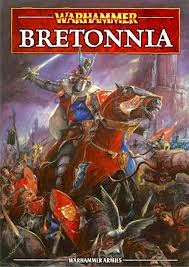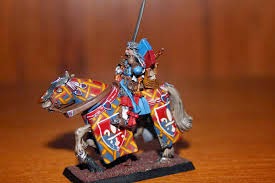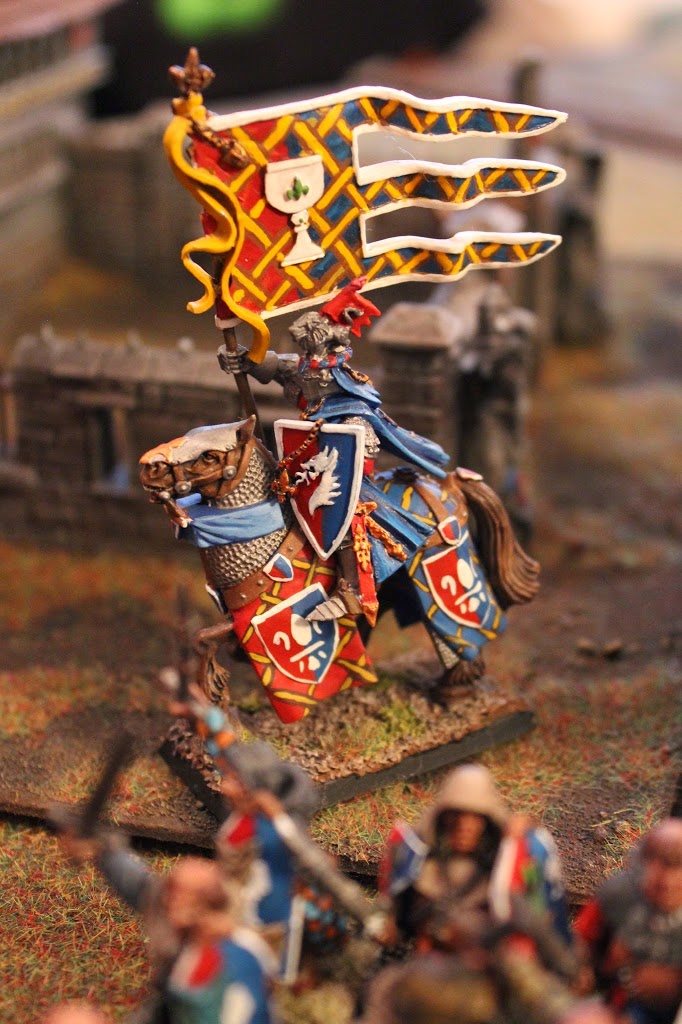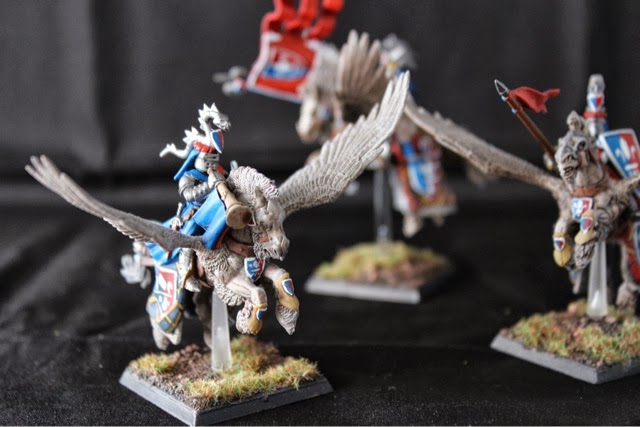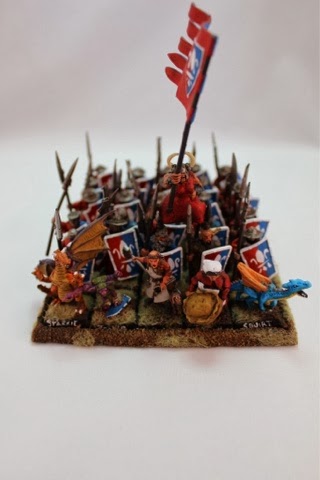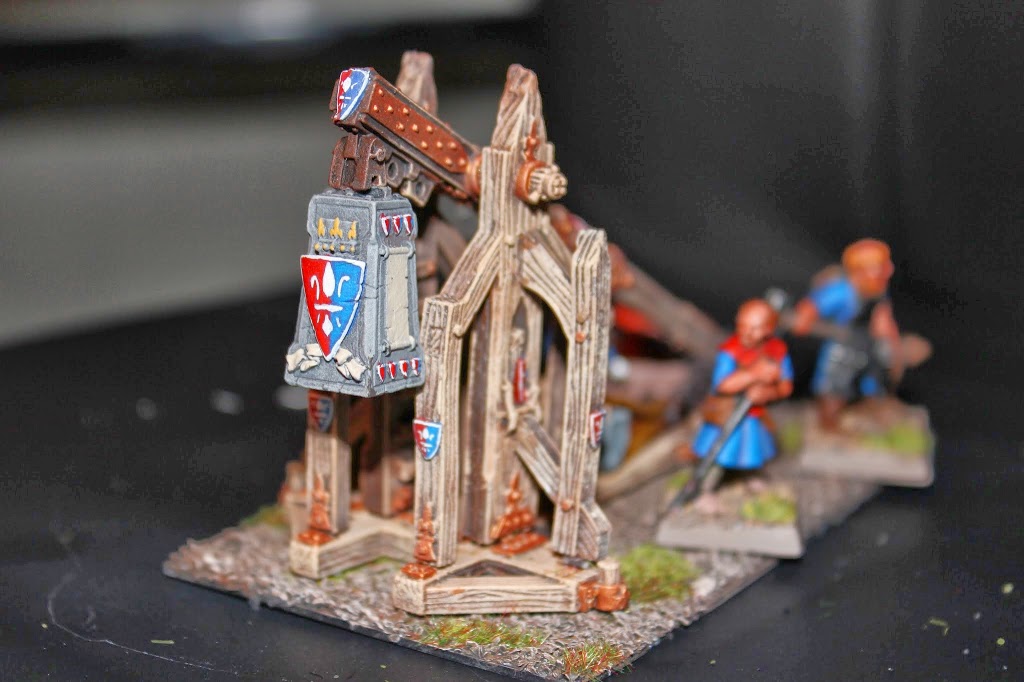WFB: Let’s Talk Bretonnia Part 1
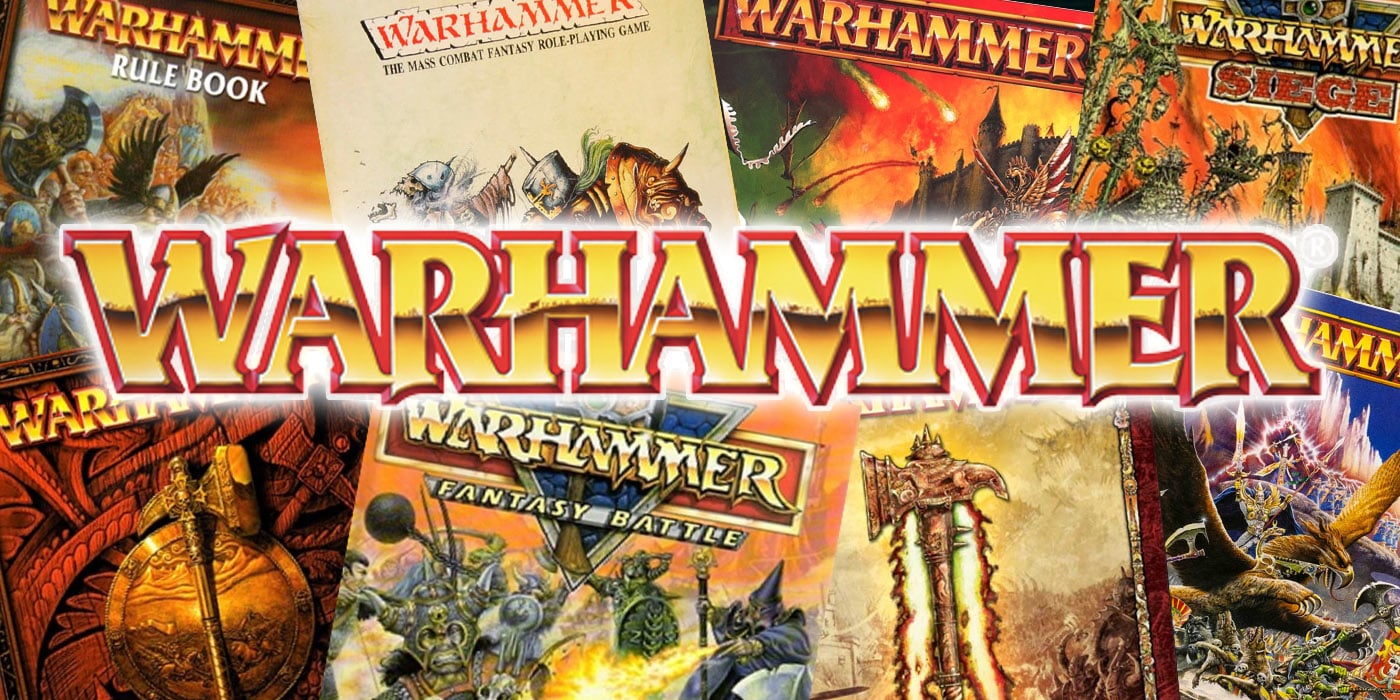
From the Book of Jen: there’s not a lot really wrong with the way Bretonia is with our current book, but yes, even I want an update!
When the Nagash/End Times announcement was made I had two emotions: anger because I still don’t have an updated book and smug satisfaction because I had insisted people not believe the rumors of a September release and it appears that I was right–now if GW shocks us all and releases it still at some point this month I will have to eat my words.
General Opinions
You’re Wrong: Here’s Why
Let’s talk about the Existing Book
Written in 2003, the current Bretonnia Army Book is the oldest in Warhammer. The units, characters and special characters were thought to be amazing and caught the attention of every fan of King Arthur that plays Warhammer. The parallels to history and to the ideal world of Arthur Pendragon were part of what drew me to the Brets myself.
I like how Wikipedia describes it:
Bretonnia is a throwback feudal nation that relies on its haughty knights, heraldry, and their mysterious patron for military strength. It is similar to the French armies before the Hundred Years’ War, combined with a heavy dose of Arthurian Myth.Bretonnian armies rely on powerful charges from their many heavily armed and armored knights in order to achieve victory. Bretonnian knights are arguably the best heavy cavalry in the game, along with being the most varied. Bretonnian armies can also contain cheap and expendable units of unskilled peasants to serve as fodder.[1]
Barring the reference to the French, because that held no interest to me whatsoever (and still doesn’t) I would agree that this is a pretty accurate description of what the Brets are.
And that statement that Bret knights are the best cavalry in the game…yes I would certainly agree with that.
In recent gaming I have been using my Empire army…do you know what I missed most? My knights.
Knights from other armies my have 1+ Armor Saves and their stats might be different, but in the end (I hate to say it) the Lady protects and my variable Ward Save and my Lance formation are two things I have learned I just can’t give up on my knights.
The Knights
- Knights in training (Mounted Yeomen)
- Errant Knights
- Realm Knights
- Questing Knights
- Grail Knights
- Pegasus Knights
The Peasant’s Duty: Models with the Peasant’s Duty may use the Leadership of any non-fleeing Knight within 6″ of them. Unit Standards in units with the Peasant’s Duty do not confer any additional Victory Points if they are captured.
The Knight’s Vow: Knights with the Knight’s Vow may ignore panic caused by friendly units and models with the Peasant’s duty.
Advertisement
The Questing Vow: Knights with the Questing Vow may ignore panic caused by friendly units and models with the Peasant’s Duty, may re-roll any failed Psychology tests, and cannot be joined by characters with the Knight’s Vow. Characters with the Questing Vow cannot use a mundane or magical lance.
The Grail Vow: Any model with the Grail Vow always starts the game with the Blessing of the Lady, regardless of whether or not the Bretonnian army prays. All attacks made by models with the Grail Vow count as magical, though this does not affect the Knight’s mount.
As you can probably guess these add their own flavor and tactics to a game.
NOTE: An often forgotten fact is that while a Character with the Grail Vow may be put in a unit of Realm Knights, a Character with the Knight’s Vow may not be put in a unit of Questing or Grail knights, etc.
Blessing of the Lady
Read page 44/45 of the Bretonnian book for the full run down of the fluff but the Lady is paramount to Bretonnian religion and any knight worth his salt worships the Lady, trusts in the Lady and believes in the Lady and therefore has the option of Praying to the Lady before battle.
There is a lot of confusion about the Blessing so let’s take a minute:
- You Pray before the battle begins but after both players have deployed their armies –you have no idea how many people think that praying is done in place of the Brets first turn.
- If they Pray a Bret’s opponent chooses whether or not to take first turn
- The blessing affects units and characters that have the Knight’s, Questing or Grail Vow, as well as Damsels and Prophetess
- The blessing also affects the mount (crucial when you think about taking a Hippogryph or Royal Pegasus)
- Blessing is a 6+ Ward Save against any attacks and changes to a 5+ Ward Save against attacks of S5+
- if the unit or character flees
- if a challenge could have been accepted and was refused the entire unit and all characters in that unit lose their Blessing
- every 3 knights counts as a full rank (15 knights is 5 ranks for steadfast instead of the 3 other armies get)
- Characters must be placed in the front rank, displacing unit champions, musicians and standard bearers (thus protecting the unit itself from being attacked from frontal assaults)–musicians and standards function as normal even if they are not in the front rank
- Great protection for the casters! — Damsel or Prophetess may be placed in the center of the second rank instead of in the front (if multiple casters in one unit they go in the center of the third rank and so on)–pay attention though because if her rank falls below 3 models she must move to the front
…all models in the front rank fight as normal. In addition to this, every Knight model in the flanks of the unit is allows to fight as long as they are directly behind a model in the front rank which is engaged in close combat (See Diagram 1 on page 40 of the army book)
Translation: if a Bretonnian knight charges all the knights on the flanks get to attack at full not as if they are supporting attacks.
- enemies can only attack models in the first rank but all the knights in the outside ranks get to attack
- Champions and Characters in second or third rank get to “attack as normal” meaning at full attack value
- only the front rank can issue or accept challenges
- Peasant’s Duty (therefore not affected by the Blessing)
- carry bows and spears (remember Bretonnian Bows have a 30″ range)
- have options for shields as well as light armor (if you want to lose the fast cavalry designation)
- can take command models.
- Vanguard (making them great re-directors and their bows give them the ability to get in close range shoot at vulnerable targets)
After charges have been declared, if any Impetuous units did not declare a charge but are within charge range of an enemy, then they must take a Leadership test to restrain themselves from charging. If this test is failed, they are forced to charge. If the test is passed they may move normally. In addition, so reckless are the Knights Errant, that whenever they charge, the unit and any characters that have joined them are Immune to Psychology for the rest of that turn.
As a Core choice, they are the cheapest of the Knight options (at 20 points/model) the Errant Knights have a stat line that is 3s across the board. They are relatively the “weakest” and yet I often see more units of these in army lists than other types of knights simply because they are so much cheaper and you can get so many more knights in that way.
Errant Knights come stock with a lance, shield and heavy armour mounted on a Bretonnian Warhorse. They can be upgraded to include a musician, banner and are allowed to carry magic banners.
The Impetuous rule is not entirely un-similar to frenzy, and though it can be a pain is not completely unmanageable if you do it right.
Realm Knights
Having proven themselves in battle Errant Knights progress to Knights of the Realm: granted their own castle and lands to manage and given instruction to protect the lands and people they govern.
Every Bretonnian army must have one unit of these.
Let’s argue that fact, because I know you want to.
When 8th Edition Fantasy came out there was a FAQ/Errata that said to ignore the paragraph on page 68 in the boarder written in italics that has a statement about them being required, but what that FAQ/Errata (and none since) have never removed is the indication of “1+ Knights of the Realm” that is written nearly directly beside that in nice fancy bold black lettering.
As a Core choice they are 24 points a model and just like Errant Knights, Realm Knights have the Knight’s Vow, come stock with a lance, shield and heavy armour mounted on a Bretonnian Warhorse.They can be upgraded to include a musician, banner and are allowed to carry magic banners.
There are only two differences between an Errant and a Realm Knight (other than points cost): WS (Realm are WS4) and the Impetuous special rule.
Questing Knights
Some Knights of the Realm feel the pull of the Holy Grail stronger than others and find themselves embarking on a quest in search of the relic, these knights take on themselves the Questing Vow.
At 28 points each Questing Knights come stock with great weapon, shield, and heavy armour mounted on a Bretonnian Warhorse. They can be upgraded to include a musician, banner and are allowed to carry magic banners
There are three differences between a Realm Knight and a Questing Knight (other than points cost): the Vow, their Strength (Questing are S4) and their weapon.
Grail Knights
Grail knights have supped from the Grail and partaken of the magical, elixir that is supposed to make them immortal (and does in all the stories).
At 38 points per model and a restriction of 0-1 units Grail Knights have the Grail Vow, come stock with lance, shield, heavy armour and are mounted on a Bretonnian Warhorse. They can be upgraded to include a musician, banner and are allow to carry magic banners.
That is where the similarities stop.
Grail Knights have WS5, S4, I5, A2 and have been given the Living Saint special rule.
Living Saints: Every model in a unit of Grail Knights can issue and accept challenges as if they were a Champion
Grail Knights are, essentially, made out to be mini-characters (their stat line nearly matches that of a Paladin), with magical attacks and 2 attacks a piece they are brutal on the charge. I have actually been thinking about finding ways to fit them back in my list because it would be less pleasant for a Warriors player (ie my husband) to continually challenge and never get to roll on the Eye of the Gods chart because he’s fighting the knights from the unit and not actually a Champion or Character…. 🙂
Pegasus Knights
Elite fighters who have tamed and trained Pegasus for battle Pegasus Knights keep themselves aloof from the others.
A Special choice, they are 55 points per model and are Monstrous Cavalry under the 8th edition rules with the Flying Cavalry special rule. They come stock with lance, shield, heavy armor and are mounted (obviously) on Pegasus. They are restricted to 0-1 unit per army.
Note: Characters on Royal Pegasus cannot join units of Pegasus Knights.
Flying Cavalry: (the Bret book has it’s own additions to this rule) Pegasus Knights are flying cavalry. This follows the rules for Flying Cavalry in the Warhammer rulebook, with the following exception: flying cavalry have a Unit Strength of 2, they get a +1 Armour Save for being mounted, and are affected by spells, etc that affect cavalry.
The riders and mounts have separate stat lines, the ride mimics that of a Realm Knight while the Pegasus are stronger (WS4, S4, T4, I4, A2)
I love using them in units of 5 or 6–though I find upgrading to a banner to be a useless waste of points since I use them like I use other fast cavalry most of the time.
Peasants
“Every peasant able to fight must serve in the armies of Bretonnia, a willingness reinforced by the promised bounty of a copper coin for any who survive the campaign” (Page 53 of the army book) How I love that turn of phrase, it is so…well…just so Bretonnian!
- Bowmen
- Men at Arms
- Grail Relequae
- operators for the Trebuchets
The Peasant’s Duty: Models with the Peasant’s Duty may use the Leadership of any non-fleeing Knight within 6″ of them. Unit Standards in units with the Peasant’s Duty do not confer any additional Victory Points if they are captured.
Bowmen
Bowmen longbows are family heirlooms handed down from father to son.
At 6 points a model they come stock with longbows, hand weapons and this awesome contraption known as “Defensive Stakes. Are WS2 and 3’s across the board otherwise, and are natural LD 5. So when I say “Pfft, they’re just peasants” I mean it as warmly as possible.
You can upgrade them to have command unit and light armour if you really feel the need to waste your points, or you can drop the stakes and take the Skirmish rule, but I don’t know very many Bretonnian players who miss out on the change to take braziers.
When 8th edition came out the Defensive Stakes changed a little, but here’s the rule in a nutshell:
- every model in the from rank has a stake base placed in front of it and must be within the player’s deployment zone
- if the unit makes any movement at any point in the game: including reforms, wheels or fleeing, the stakes are removed for the rest of the game
- they are considered Obstacles, Fences (which if you look those up in the main rulebook make them -1 to Hit)
Men at Arms are made up of sons of peasants who have been taken into their lord’s castle to be trained–it is a great honour. The process, if you like reading fluff, is rather torturous for these young souls. They are lined up and inspected–the inspection takes an entire day of standing, likely being hit and without food or drink as they wait, standing tall as they pray that they are chosen. At dusk the strongest are.
Grail Reliquae: This holy shrine is placed in the centre of the front rank, just like a Standard Bearer or Musician. If the unit reforms, the Reliquae is always moved to the front rank again. The Grail Reliquae has a 5+ Armor Save. In close combat, this save is increased to 4+. The Reliquae counts are both a Standard Bearer and Musician. While there are rank and file Battle Pilgrims remaining in the unit each wound caused agains the Reliquae will result in one regular rank and file model being removed. Only once all the Battle Pilgrims in the unit are removed does the Reliquae itself start taking wounds. In addition, the presence of the Grail Reliquae means the entire unit will be affected by the Blessing of the Lady if the Bretonnian army prated at the start of the game.
At 6 wounds, the Reliquae otherwise shares at a stat line with the rest of the Bretonnian peasants.
The Battle Pilgrims also share a stat line with the other peasants but also have the Hatred and Stubborn special rules.
They are a 0-1 Special choice, but if you have a maxed unit with the Reliquae and 24 pilgrims I have found they are an amazing little bunker that isn’t removed from combat very easily–I wish I could take 2!
Trebuchets
Oh the beauty and frustration that is the Bretonnian trebuchet!
…follows all the rules for Stone Throwers…of the the Warhammer rulebook, with the following exceptions: The range of the Field Trebuchet is 12″-60″ and its Strength is 5(10). In addition, it can never be moved during the game, though it may be pivoted on the spot.
With all the changes in 8th Edition that has left the Bretonnian trebuchet as one of the strongest. My motto is “when it hits, it hurts”. A direct hit can be devastating to a unit. It’s getting lucky enough to get that direct hit that’s the challenge.
So that’s the Army..
- all knights OR
- very dominant peasants
- with Character builds I can make it two stubborn units that bog down units
- on its own they make great support for units of knights, providing that extra something to help with the second round of combat grind (you could even do 2 units of 25 men at arms instead of one 50 to manage this)
- 13 man Realm
- 14 man Errant
- 2 x 5 man Realm
- 4 man Peg unit
- 10 man Bowman unit
- and a whole bunch of characters
- lance formation is awesome, but don’t forget it is not a required formation
- the army has to be built for punch but also for sustainability.
- it is not a point or click army–you have to think to be able to use it, you have to think, you have to be tactical



